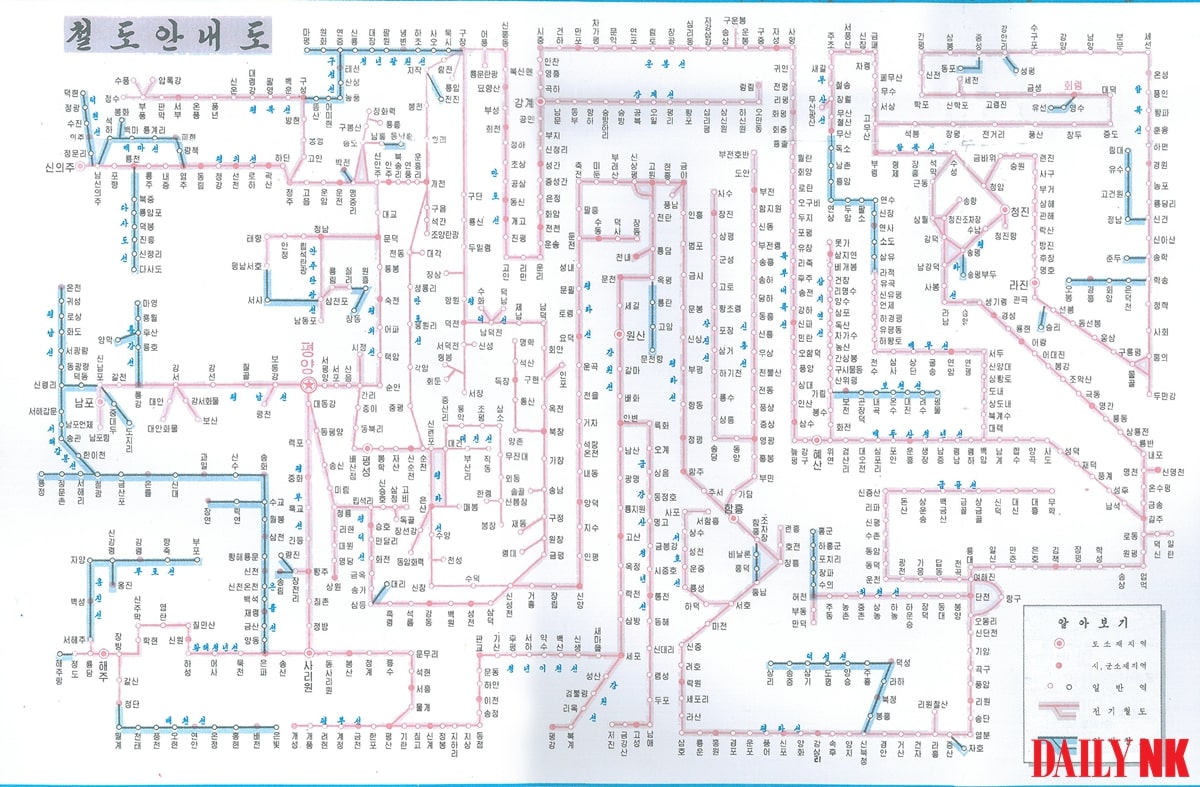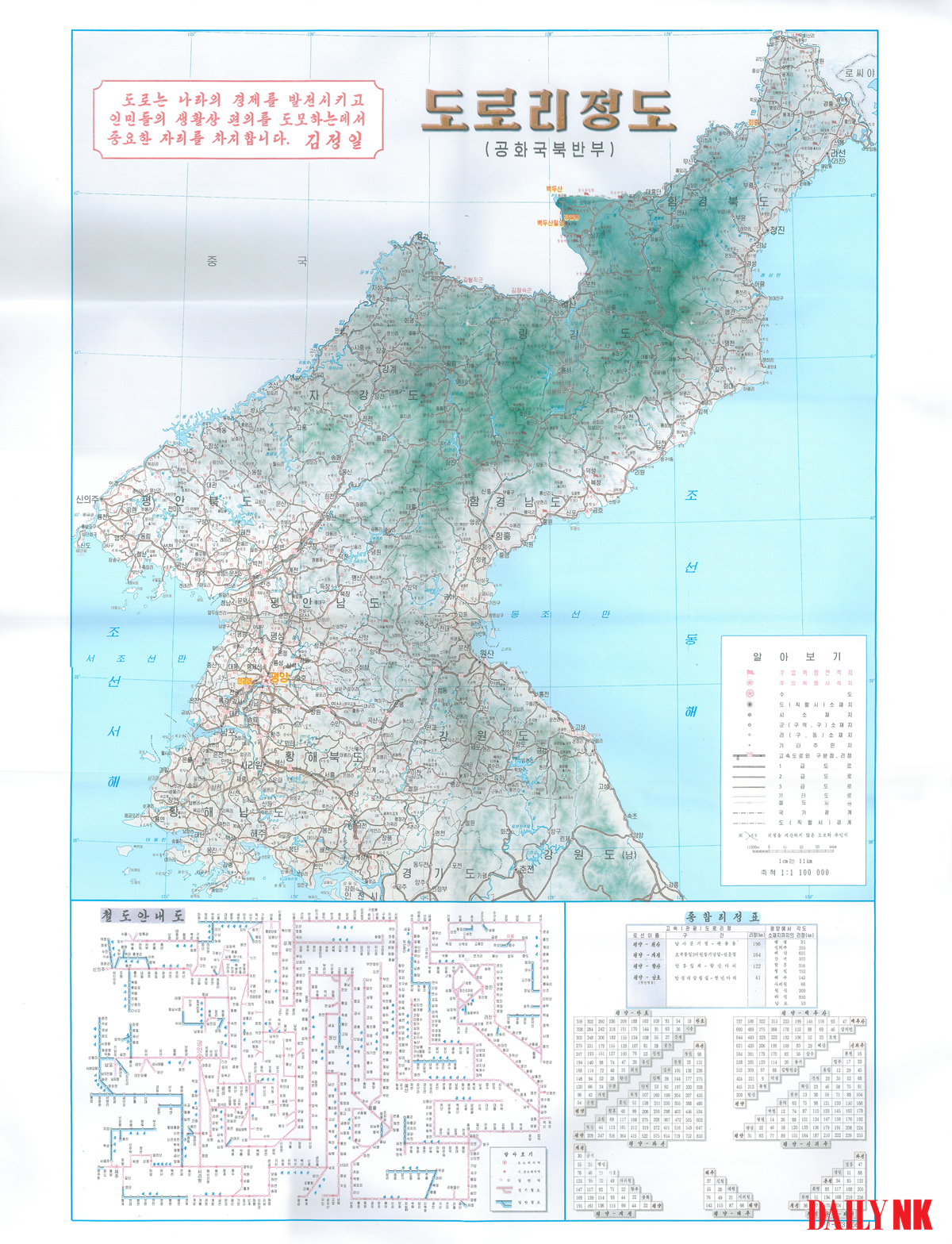
Daily NK has obtained an updated railway map that depicts North Korea’s railway network and electric train lines throughout the country.
North Korea has moved to electrify its railway system since the 1960s and most of the railway lines are now electric. The areas marked in red on the map indicate the electrified train lines, while those in blue represent diesel or those operating steam engines.
The electrification of North Korea’s railway system is largely complete, but the country’s electricity supply, aging infrastructure, and lack of technology means that trains running on the main Pyongyang-Sinuiju line can only run up to 60 km per hour. This is in significant contrast to South Korea’s KTX trains, which speed along at 300 km per hour and can reach all of the largest cities in the country within two hours.
The 26 major electrified lines include the main Pyongwui Line (Pyongyang to Sinuiju), Pyongra Line (Pyongyang to Rason), Kangwon Line (Kowon, South Hamgyong Province, to Pyongang, Kangwon Province), Haeju Youth Line, Hambuk Line, Kaegye Line, Pyongbuk Line, and Pyongdok Line.
The 15 lines that still operate diesel or steam engines include the West Coast Kapmun Line, Anju Mine Line, and Youth Palwon Line. The steam engines that previously used coal or wood since the 1970s have been largely scrapped, and only a few remnants remain.
The Pyongyang source that sent the railway map said that railways in the country have been running relatively smoothly in recent times. “The stoppage of coal exports due to international sanctions over the past several years has led to a relative increase in domestically-produced electricity,” he said.
“People used to talk a lot about train stoppages due to blackouts in railway stations and local motels, but right now things are running normally.”
North Korea’s aging railway infrastructure along with its chronic electricity shortages has led to frequent train stoppages in the past.
According to defectors, railway lines off the main railways that head into mines or special zones are typically accommodate coal or steam engines. The “Paekmu” Line that passes through mountainous Musan in North Hamgyong Province and Paekam County in Ryanggang Province was previously used by steam engines until electric engines began operating on the line from the early 1990s.
A defector named Kim Ae Ryong (alias) told Daily NK that “lines passing through mines, steelworks, or border and coastal areas don’t have steady supplies of electricity, so it was decided that steam or coal engines would be more suitable for them […] North Korea has sought to electrify its railways to modernize the system, but the engines and tracks are seriously dilapidated.”
The regime has spent exorbitant amounts of money on the tracks for the special train used by the Kim family, but because those used by ordinary trains were largely built during the period of Japanese occupation, they are in very poor condition. Trains are limited to speeds of 40-60 km per hour on average.
According to a South Korean team of officials and railway experts that conducted an assessment of North Korea’s railway system in December of last year, the North Korean section of the Gyeongui Line sees trains traveling at only 20-60 km per hour, while those on the East Coast Line only reach speeds of 30 km per hour. Moreover, journalists who rode a special train that was arranged to take them to and from the blasting of the Punggye-ei nuclear site in May 2018 had to spend 11 hours on the train to travel from Wonsan to Kilju.
Furthermore, the widespread lack of fuel means that chemically-untreated wood is often used to build the tracks, with the track ballast being improperly placed at times. This can result in significant damage to the tracks during strong rains.





















